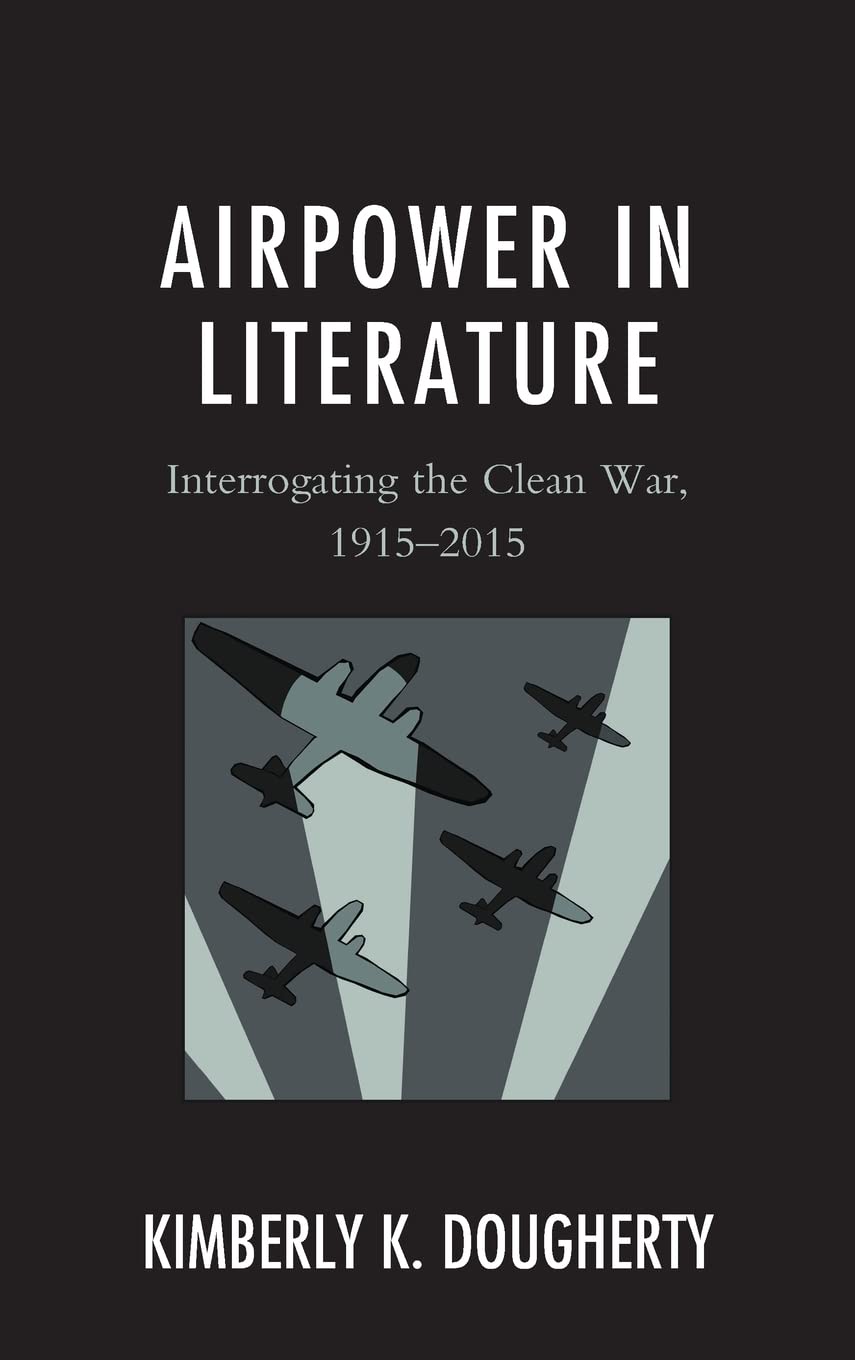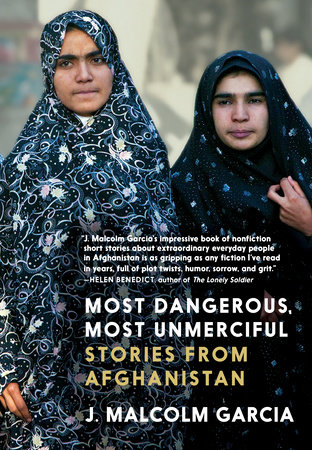New Review by Michael Gruber: “The Myth of the Clean Air War”
A review of Kimberly K. Dougherty’s Airpower in Literature: Interrogating the Clean War, 1915-2015
One of war’s most pernicious myths is that new technology will not only hasten its outcome but lessen its brutality. Paul Fussell describes this delusion in the first pages of his text Wartime: Understanding and Behavior in the Second World War, where he recounts American propaganda images from the 1940s showing “the newly invented jeep, an elegant, slim-barreled 37mm gun in tow, leaping over a hillock.” Such “agility and delicacy,” Fussell contends, conveyed the impression that “quickness, dexterity, and style, a certain skill in feinting and dodging, would suffice to defeat pure force” (1). Subsequently, as World War II began, “everyone hoped, and many believed, that the war would be fast-moving, mechanized, remote-controlled, and perhaps even rather easy” (1). The muck, grime, and hellish attrition of Guadalcanal, Okinawa, Iwo Jima, the Hurtgen Forest, and Anzio testify to the contrary.
This myth is not merely restricted to land. Although the airplane has been deployed since the Great War, the enduring fable is that technology has advanced to such a degree that new airframes, because of their sophistication and speed and precision, will end wars quickly, cleanly, and with minimal loss. Such conceits show surprising longevity, being as old as the military use of the airplane itself, and have massive implications for aircrews, the bombed, and especially our beliefs about how modern wars are fought. In her text Airpower in Literature: Interrogating the Clean War, 1915-2015, Kimberly K. Dougherty takes these beliefs to task. Her central aim is to contrast these beliefs with various portrayals of the so-called “clean air war” in war literature. In doing so, she puts forward a compelling argument that airpower is an enterprise that is not only slow, messy, and deadly, but has even greater unseen costs, and is spoken about in such ways that the true price of its deployment remains always cloaked in euphemism.
Ironically, Dougherty’s “interrogation” is effective for its precision. She makes many keen observations about these unseen costs, noting that during war, for example, the bodies of air crews are often “hidden” from view by virtue of their manner of death, being incinerated or blown out of the sky, rendering their remains unrecoverable. Sometimes, these same air crews are presented as “becoming one” with their aircraft, such that what flies are not aviators but a kind of Frankenstein’s monster that is half man, half machine. Another insight is that in the numerical tally of an air war’s casualties, it is the number of aircraft shot down that seem to be given primacy over human casualties. She notes the long history of airpower’s description by military planners and strategists as being “above” the earth, in the domain of the sky, giving it a kind of omnipresence, and where it also gains omniscience, as aircraft can purportedly observe battlefields in ways unavailable to the mere mortals constrained to the ground. All these mythologies, says Dougherty, conspire together to present aerial warfare as “clean,” powerful, godlike, and unencumbered by the grotesque violence and terrain of traditional warfare.
Dougherty also makes much of “discursive distancing,” which originally refers to a kind of Foucauldian rhetorical analysis that assesses how subjects are allegedly dissociated from hegemonic social systems through discourse, despite ostensibly being benefactors of those same systems. Basically, her point is that the discourse surrounding the use of airpower contributes to its reckless mismanagement. Key to her exploration are two texts, Michael Herr’s Dispatches and Tim O’Brien’s Going After Cacciato, which both provide “stunning portraits” of helicopters, “the machine perhaps most associated with the Vietnam War” (145). She notes that the helicopter enjoyed special intimacy with the troops they ferried, being close to the ground and slow, and as such “this intimacy, perhaps, makes it all the more important to separate human from machine, as the borderlines becoming increasingly blurred” (145), and as such they merit a special kind of profile about how the rhetoric of airpower contributes to its inevitable misuse.
But it is Douhgerty’s concern over this melding together of man and machine that is, in my opinion, the apex of the book, as it leads her to surmise that the rhetoric surrounding the deployment of airpower lends itself to certain beliefs about technology and its use in war. As Dougherty so capably demonstrates, the infatuation with “clean” airpower is naturally sourced in its innovativeness. The trajectory of this infatuation is an alleged “technological war prosecuted solely by machines, with no threat to one’s own population” (145), where the human cost of war will have been supposedly entirely eliminated. This reflection becomes especially prescient when one considers the ongoing war in Ukraine, or the 2021 war between Armenia and Azerbaijan, where the use of lethal drones have been notably effective. Additionally, so-called “drone swarms,” theoretically composed of thousands of remotely controlled unmanned aerial vehicles, so designed to overwhelm enemy air defenses, have gained currency in the thought of future military planners, both in the West and with our foreign adversaries. While it is not hard to see how Dougherty’s bone-chilling vision will manifest, given recent evidence, it is also not hard to see how her description of “clean” airpower’s trajectory—that is, its culmination into a supposedly bloodless “technological war,” fought primarily with machines—will be anything but another fable in the sprawling compendium of historical fables that have always surrounded how “the next war” will be fought. Propaganda will continue to assert the next war’s supposed “cleanliness,” highlighting how new technological innovations eliminate the need for the pointless suffering of those archaic and barbaric wars of decades past, only for the “on-the-ground” reality to offer different evidence—that is, the evidence of tens of thousands of mangled corpses of 18, 19, and 20 year-old kids.
All being said, a natural rejoinder to this—which I admittedly found myself asking as I read this text—is “so what?” Is Dougherty’s counterargument really that we should not substitute machine for man, given the capability? Or that Dresden or Tokyo should not have been bombed because the Allies unfairly privileged the lives of its own service members over unarmed civilians? Should a future defensive war fought by the United States not privilege its own service members over the unarmed civilians of belligerents, given such a tragic choice? It seems ludicrous to demand that wars only be fought by one side unilaterally leveraging itself into a potential disadvantage. The Second World War in particular was an existential struggle between mutually exclusive and competing visions for the world, the role of the state, societal organization, and how natural resources should be utilized to serve those ends. It’s not hard to see how Dougherty’s musings feel like a luxury good given this environment.
But I suspect such a rejoinder misses the point. Dougherty’s point isn’t to say such things are right or wrong merely—it’s that wars are fought with elaborately constructed mythologies about the use of technology (such as airpower), and that military planners and service-members alike not only believe these mythologies, but sometimes even believe them despite knowing they are myths. The cost of believing in such myths is unimaginable brutality and the loss of life to millions of people, as various truths are obscured or unable to be recognized because of the political nature of the war. The geopolitical environment of the Second World War, for example, not only made realities like the humanity of the enemy impossible to recognize, but exaggerated their costs and contributed to immense suffering both among the bombed and the bombers. Such calamity is worth recognizing.
On the more pedantic side, I sometimes found Dougherty’s emphases and language distracting, if anything because she too strongly relies on the kind of intersectional analysis and related academic jargon that dominates contemporary humanities publications. In one section, she also provides a summary of the causes contributing to the Spanish Civil War that are laughably uncritical and overly generous to the Republicans and the Popular Front, which made me suspicious of her framing of other historical events. But these are rather nitpicky when her broader contributions are taken into consideration. Dougherty has ultimately produced a razor-sharp text that attacks the fictions we all too easily attach to the role of technology in warfare. In uncovering beliefs about airpower’s “cleanliness,” she has produced something worth celebrating.

